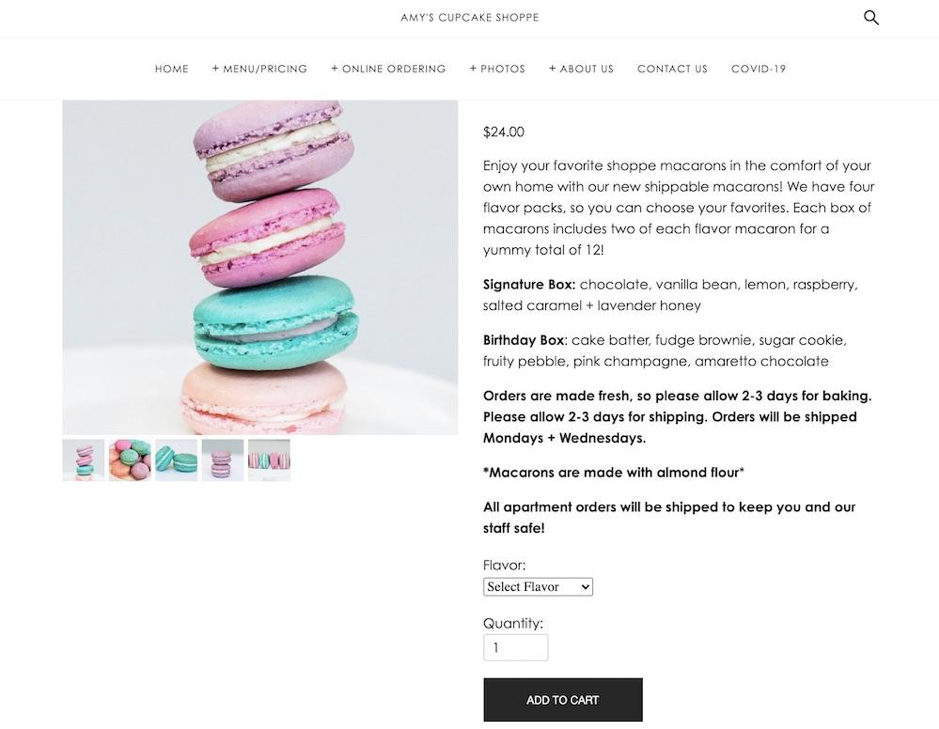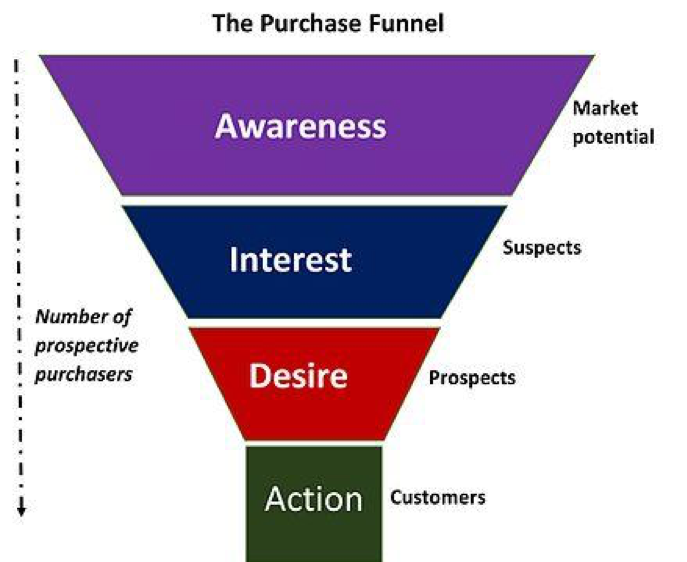It’s been a tough year, to say the least, and without being a harbinger of doom and gloom, it’s looking like we won’t see significant improvements for a while yet. Therefore, it’s down to us, as entrepreneurs, to focus on what we can control. We can’t control the COVID-19 virus. We can’t control governmental decisions, and we can’t control the economic fallout from lockdown measures.
What we can control, however, is how we react to it. More and more people are working from home, shopping from home, and becoming far more comfortable with the online world. Therefore, moving your business (or at least part of it) online could be an excellent opportunity for you to continue serving your customers and attract new prospects to your business.
As an entrepreneur, you’ve already done the hard part. You built a business! Now is the time to take your skills, tenacity and determination and use them to grow the online arm of your local empire.
Here’s how to get started:
StartupNation exclusive discounts and savings on Dell products and accessories: Learn more here
Decide what you’ll sell online
Depending on your business model, you may decide to sell only a limited product line online.
For example, if you own a furniture store, you may choose to offer only small, shippable items to begin with until you’ve built up your sales funnels and systems.
If you own a clothing store, you might start with accessories or items that have less chance of being returned due to fitting issues, again just until you’ve tested the market and have established your brand online.
If you’re a service-based business, you may choose to add new items you’re not currently selling. For example, a hairdresser might start an online e-commerce store selling hair products, treatments or accessories. A local cafe might go online to sell a specific range of cakes or even recipe books of some of their customers’ favorite dishes.
No matter what business you’re in, it’s time to start getting creative with what you could potentially offer online related to your core business.
Set up or improve your website
The chances are you already have a website for your local business. However, it may resemble an online brochure as opposed to a fully interactive, dynamic website customers can search, view and purchase products from.
Start by reviewing established online businesses in your niche for inspiration. What’s on their homepage, product pages and contact page?
Now that you’ve done some research, it’s time to get your website ready for online purchases.
The most important pages for your site are:
- The product and checkout pages
- The homepage
- The shipping and returns policy
- Your contact page
- Content pages (blog posts, informational articles, videos, etc.)
While your home page needs to be clean and attractive while clearly laying out what your business does (ideally featuring some of your most popular products), the most important pages by far are your product and checkout pages.
As you create content or run promotions for your products, you’ll likely send people directly to the relevant product landing page, so make this your primary focus to get started. You can improve on everything else as you grow.
Your product page should contain several images of your product from various angles, a compelling product description, the price, an “add to cart” button, and ideally reviews from past customers.

The easiest way to turn your static website into a dynamic shopping site is to use a ready-made, fully integrated e-commerce platform like Shopify. If you already have a WordPress website, add an e-commerce plugin, such as WooCommerce.
Related: Which Legal Entities are Best for Main Street Businesses?
Identify your online target market
When transitioning online, it’s crucial to identify who is likely to visit and purchase products from your website. You’ll need to grow an online presence, and the first step in doing so is to understand who your target market is, along with their wants and needs, and how you can reach them through content marketing.
You already have customers who have used your services or shopped with you in-store before, so start with them.
Think about the demographic of your current customers, and ask yourself:
- What’s their gender?
- How old are they?
- What do they come to your business looking for?
- What do you think attracts them to your existing business?
- Where do you think they hang out online?
If you run the local surf store, for example, you might find many of your customers on Instagram, TikTok or YouTube. If you’re the local butcher, chances are your customers are on Facebook or Twitter, and if you run a local business consulting service, they’re likely on LinkedIn.
The key to attracting your ideal audience to your online business is to ensure you’re publishing the right content on the right platforms. Identifying your customers and understanding where they spend their time online will help you choose the ideal social media platforms and ensure you’re creating content that resonates.
Create or enhance your social media presence
In addition to having an e-commerce component on your website, you must also create a strong social media presence. To start, pick just one platform and focus on building your audience there before branching out to other social media sites.
Create an account on your platform of choice if you don’t have one already. Add compelling images of your brand and start to consistently share content that you think will resonate with your audience.
Some ideas include:
- Informational blog posts
- Product or informational videos
- High-quality and engaging images
- Memes or fun posts showcasing your products/brand
- Carousel picture posts
- Behind the scenes story videos/images
- Podcasts
- Product launches
- New features
- Sales/discounts
- Contests/giveaways
- Quizzes
You’re limited only by your imagination. That’s the beauty of social media! It’s a wonderland of creativity, allowing you to showcase your products and your brand in a compelling, fun and engaging way.
Build your online audience
The best way to start building an online audience is to create content consistently.
Depending on the platform you’re on, record and upload a video once a week, write and post a blog post, publish a podcast, or create daily stories on your Instagram account or Facebook page.
The key is to be consistent and to keep showing up. As the old saying goes, “you have to be in it to win it.” Posting once and then disappearing for weeks on end will get you nowhere, so create a schedule you can confidently stick to and make it happen.
As you grow your audience, a surefire way to increase sales is to start building an email list.
Growing a database of email subscribers allows you to nurture a very targeted audience and build a far more intimate relationship, thereby turning leads into paying customers.
Here’s where the “AIDA” model comes into play.

When building your audience and your email list, the “awareness” stage is the content you regularly publish on your social media or content platform of choice.
As people become “interested” in your content and start to engage with you by commenting, liking, sharing, etc., you can further develop the relationship by offering something digital for free in exchange for their email address.
I say digital, because whatever you offer needs to be scalable. You may attract hundreds of email addresses a day, so you want to create something that’s immediately available and easy to download and access. As an example, a hairdresser might offer a free guide to hairstyling or haircare. A local restaurant might offer a free mini recipe book. The local accountant might provide a free checklist to complete year-end taxes.
Those who willingly give their email address for your free offer have now become prospects, and you can begin sending exclusive information to your prospects by email, over time turning them into paying customers.
Develop your online business model
As your audience grows, you’ll become very adept at providing content that meets their needs. That’s the beauty of social media. It’s engaging and interactive, allowing your customers to give instant feedback on your content, brand and products.
Hence, as your online prospects and customers increase, you’ll need to develop your business model accordingly. Perhaps you’ll need to add new product lines or take away products that haven’t proved popular. You’ll most likely need to improve your sales funnels, including landing pages, product pages, checkout pages, etc.
You might decide to rewrite your email campaigns, offer more promotions or flash sales, start to run some co-promotions with complementary businesses in your niche, expand to more social media platforms, or employ a dedicated online marketing team.
The online world changes at an incredibly quick pace, so brace yourself to be open to learning new skills and changing your approach over and over as you find new strategies that work and attract potential customers.
One way to be ready for change is to utilize sites like Upwork.com or Fiverr.com, full of talented contractors, all looking for short-term, flexible contracts. As you come across a new social media platform or want to try a new marketing approach, hiring an expert to get you up and running will save you a lot of time and potential stress!
Sign Up: Receive the StartupNation newsletter!
Start with one
Author, speaker and successful businessman Keith Cunningham is the inspiration behind Robert Kiyosaki’s “Rich Dad, Poor Dad” book series. He is the “Rich Dad” character, having built many multi-million-dollar businesses throughout his career.
I was lucky to have attended one of his “buy a business” workshops a few years back, and something he said has stuck with me ever since: “A business gets rich focusing on one thing. It stays rich by diversifying.”
The online world is vast. The competition is massive, and every business has the same goal: finding and keeping customers. To compete, you need to be crystal clear about who your customer is and what you’re selling.
You won’t do yourself any favors trying to be all things to everyone, especially when just starting your online venture. You’ll simply fade into obscurity.
For example, if you currently have a women’s fashion store which caters to all women in your local area, consider picking a specific target market, such as plus-size women, petite women, pregnant women, or women over 60. You then start your online business by offering items for that specific niche only.
If you own a jewelry store, consider specializing in watches or rings.
If you’re a local accountant, you might start by targeting only online retail outlets or health and fitness businesses. Or you might specialize in management accounts or taxes.
A local cafe might create an online arm specializing in gluten-free cupcakes or savory muffins.
The key is to be as specific as possible about what and who you’re serving so you can speak directly to that segment of the market. As you grow, you can start to diversify, add more product lines, cater to a widening audience, and expand into other niches and areas.
After 10 years of running online businesses, the best advice I can give you is to start with one target audience in mind. Start with one specific product line, start with one content platform, and start with one social media platform.
Summary
Moving your business online can feel like a scary or stressful ordeal, but it doesn’t have to be all or nothing. Start with a part of the business most conducive to online selling and grow from there.
Talk to current customers as much as possible and ask what would encourage them to buy online or what products they’d like you to add to your business, which they could purchase while watching Netflix and without leaving the sofa!
By offering your products and services online, you’re doing a tremendous public service for everyone who currently has no choice but to stay indoors, so see this as a positive step forward and a way to expand your business in the future.
Originally published Nov. 21, 2020.






